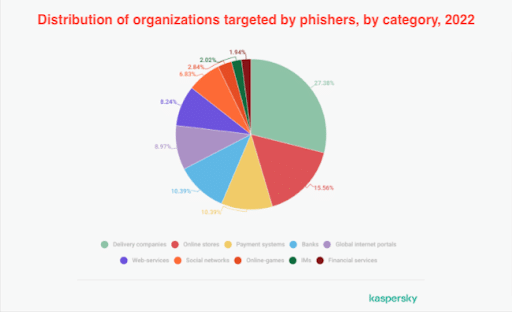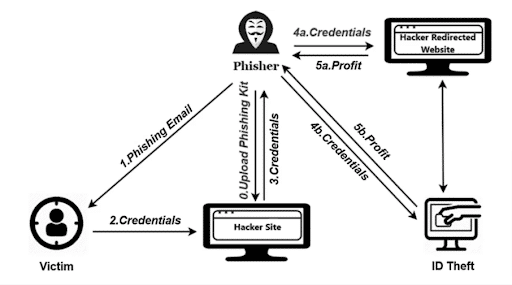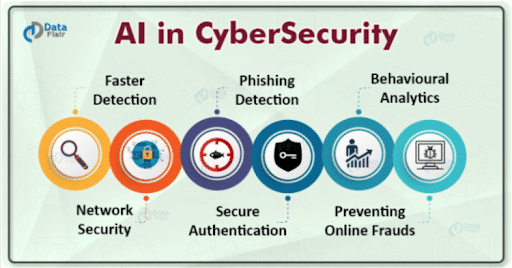There’s an invisible war waging daily in the digital world, where technology is both the sword and shield: the realm of phishing attacks. As the battlefield evolves, so must our strategies. Artificial Intelligence (AI), the marvel of our era, has played a crucial role in this war on both sides. The pressing question for infosec professionals is: “Can AI put an end to phishing?”
With an 81% increase in email phishing attacks since March 2020, the urgent need to combat this pervasive threat has become more evident. As cyber criminals continuously refine their tactics, businesses and individuals are left vulnerable and searching for effective solutions. Is AI the anti-phishing savior that we’re looking for? Or is it yet another weapon that both sides can use?
Phishing Season: The Current State of Phishing in 2023
Phishing isn’t a new phenomenon; it’s been a perpetual thorn in the side of cybersecurity. But, as digital interactions multiply, so do these clandestine attacks. According to a recent report, phishing attacks have surged by 70% in the past year alone, with the finance, manufacturing, and pharmaceutical industries bearing the brunt.
Looking across the threat landscape, it’s apparent that criminals are getting smarter and more resourceful. As businesses fortify their digital defenses, attackers are shifting tactics, fine-tuning their strategies, and even employing AI in their nefarious endeavors. This AI-powered evolution of phishing is leading to increasingly sophisticated, targeted, and hard-to-detect attacks.
The cost of these attacks is staggering. Reports indicate that companies worldwide lost over $3.2 billion due to phishing in 2022. These statistics are a stern reminder that we can’t afford complacency in this ongoing battle.

The Role of AI in Counteracting Phishing
The transformative power of AI technology has become apparent since late 2022. When wielded right, AI can be a formidable ally in combating phishing. Machine learning algorithms can process vast amounts of data, learn to recognize the signs of a phishing attempt, and respond at speeds impossible for human analysts. This includes flagging suspicious emails, detecting anomalies in network traffic, and preemptively shutting down phishing websites.
As early as 2019, AI proved it was useful against spam and phishing when Google boasted that its TensorFlow machine learning (ML) framework blocked approximately 100 million additional spam messages daily.
Emerging AI trends, like deep learning and generative adversarial networks (GANs), are particularly promising. They can uncover patterns hidden in the noise and adapt to the ever-evolving tactics of phishers. However, there’s a caveat: the same tools that can protect us can also be weaponized.
The Double-Edged Sword of AI
In a curious twist of fate, AI, while being our defense, is also being used to refine the art of phishing. Generative AI tools like GPT-4, originally developed to help humans, are now being exploited for phishing. These tools can generate human-like text, allowing attackers to craft persuasive, context-aware phishing messages at scale.
Criminals have started leveraging AI to create highly personalized phishing emails virtually indistinguishable from legitimate ones. They’re even using AI to mimic voices, making voice phishing (vishing) more deceptive than ever. It’s a stark reminder of the dual nature of AI.

Can AI End Phishing?
AI has demonstrated remarkable success in identifying and neutralizing phishing attacks. However, suggesting that AI can single-handedly end phishing might be overly optimistic. AI is a powerful tool, no doubt—but its efficacy is largely contingent on how we use it.
The future of the fight against phishing—and of cybersecurity itself—will not just be about better algorithms or more advanced AI, but about the people who use these tools to protect, defend, and innovate. While AI can help automate threat detection and response, it can’t entirely replace human intuition and expertise. It’s the combination of AI and skilled cybersecurity professionals that holds the promise of a more secure digital world.
In this fusion of human expertise and artificial intelligence, the end of phishing will be found—if not entirely, then to a significant extent.

The Road Ahead
The battle against phishing is not a sprint but a marathon. As the tactics of cybercriminals evolve, so too must our defenses. AI will undoubtedly play a crucial role in shaping these defenses. The key will be to stay one step ahead, anticipate how attackers might misuse AI, and strategize our defense accordingly.
In the ever-changing cybersecurity battlefield, vigilance, innovation, and resilience will continue to be our best allies. As industry leaders, we are responsible for fostering a culture of cybersecurity, investing in AI-powered defenses, and building teams with the expertise to wield these advanced tools effectively.
Importantly, organizations must continue their efforts to increase employee awareness of the constantly changing landscape of risks, which will only grow in complexity and uncertainty due to the growing adoption and penetration of AI, both on the attacking and defensive end.
Remember, in this invisible war, every one of us is on the front line. Our collective actions will determine if we can turn the tide against phishing. With AI at our side and a vigilant approach, we can be optimistic about our odds. But it requires us to be unrelenting in the quest for security—constantly learning, adapting, and innovating.

















